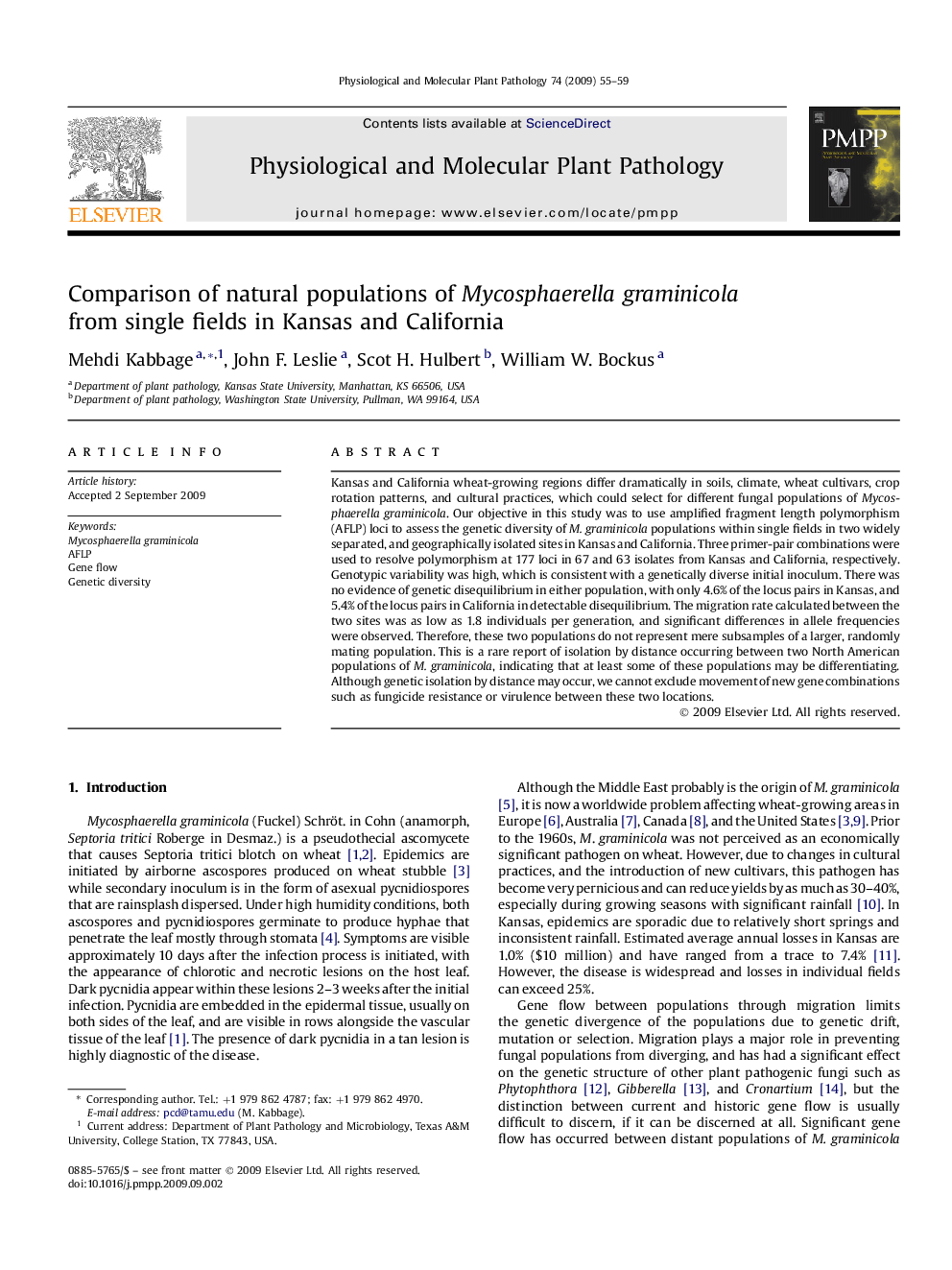| Article ID | Journal | Published Year | Pages | File Type |
|---|---|---|---|---|
| 2836569 | Physiological and Molecular Plant Pathology | 2009 | 5 Pages |
Kansas and California wheat-growing regions differ dramatically in soils, climate, wheat cultivars, crop rotation patterns, and cultural practices, which could select for different fungal populations of Mycosphaerella graminicola. Our objective in this study was to use amplified fragment length polymorphism (AFLP) loci to assess the genetic diversity of M. graminicola populations within single fields in two widely separated, and geographically isolated sites in Kansas and California. Three primer-pair combinations were used to resolve polymorphism at 177 loci in 67 and 63 isolates from Kansas and California, respectively. Genotypic variability was high, which is consistent with a genetically diverse initial inoculum. There was no evidence of genetic disequilibrium in either population, with only 4.6% of the locus pairs in Kansas, and 5.4% of the locus pairs in California in detectable disequilibrium. The migration rate calculated between the two sites was as low as 1.8 individuals per generation, and significant differences in allele frequencies were observed. Therefore, these two populations do not represent mere subsamples of a larger, randomly mating population. This is a rare report of isolation by distance occurring between two North American populations of M. graminicola, indicating that at least some of these populations may be differentiating. Although genetic isolation by distance may occur, we cannot exclude movement of new gene combinations such as fungicide resistance or virulence between these two locations.
